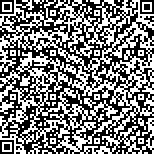| 本文已被:浏览 1329次 下载 1212次 |

码上扫一扫! |
| 草地放牧强度遥感解译方法——以和静县高寒草原为例 |
|
邵明轩1,王洁2,贾宏涛1,刘耘华1,程军回1,盛建东1*
|
|
|
| (1.新疆农业大学 草业与环境科学学院/新疆土壤与植物生态过程重点实验室, 乌鲁木齐 830052;2.俄克拉荷马大学 微生物和植物生物学系, 美国 诺曼 OK 73019) |
|
| 摘要: |
| 为研究高寒草原放牧强度,以新疆和静县高寒草原草地为研究对象,利用2013年7—8月野外草地地上生物量采集数据和2013年遥感数据源MDOIS13Q1的归一化植被指数(NDVI),建立了高寒草原草地地上生物量和植被指数(NDVI)的遥感反演模型;并通过分析近10年(2008—2017年)监测点每年NDVI的旬变化特征,解译高寒草原草地的放牧起止时间,通过分析归类各样点NDVI变化特征,并以ΣNDVI值划分放牧强度。结果表明:1)本研究中建立的高寒草原草地地上生物量遥感反演模型,以模型y=523.21 NDVI2-82.8 NDVI+55.84(R2=0.732 9,P<0.000 1)精度最优;2)通过NDVI变化曲线的突变点确定了高寒草原夏季放牧开始时间为6月9—26日,结束时间为8月28日—9月14日,该结果与实际放牧时间基本吻合。3)通过分析NDVI生长季累积总量(ΣNDVI)、生长季NDVI波动下降频数和幅度确定放牧强度,构建了高寒草原草地放牧强度分级标准,与实地判断的放牧强度相比,精度验证达到89.47%,并据此制作了研究区放牧强度等级图。本研究结果可为利用多时相遥感影像快速确定草地放牧强度和放牧管理提供参考。 |
| 关键词: 放牧强度 植被指数 地上生物量 和静县 高寒草原 |
| DOI:10.11841/j.issn.1007-4333.2021.04.16 |
| 投稿时间:2020-09-04 |
| 基金项目:NSFC-新疆联合基金重点项目(U1603235);中科院战略性先导科技专项(XDA05050400) |
|
| Remote sensing interpretation method for grassland grazing intensity: A case study of alpine grassland in Hejing County |
|
SHAO Mingxuan1,WANG Jie2,JIA hongtao1,LIU Yunhua1,CHENG Junhui1,SHENG Jiandong1*
|
| (1.College of Grassland and Environmental Sciences/Xinjiang Key Laboratory of Soil and Plant Ecological Processes, Xinjiang Agricultural University, Urumqi 830052, China;2.Department of Microbiology and Plant Biology, University of Oklahoma, Norman OK 73019, USA) |
| Abstract: |
| Grazing intensity directly affects the stability and development of grassland ecosystems. The accurate and rapid assessment of grazing intensity is critical for sustainable management of grassland ecosystems. To study the grazing intensity of alpine grassland by remote sensing interpretation, the alpine grassland in Hejing County, Xinjiang Province of China was selected as study region. An aboveground biomass(AGB)model was established firstly by using the field AGB samples collected from July to August 2013 and the normalized vegetation index(NDVI)from MDOIS13Q1 in 2013. Based on the results of this proposed model, the grazing intensity of the alpine grassland was then estimated by analyzing the annual NDVI time series at a 16 d interval during the past 10 years of 2008—2017. Interpretation of the alpine grassland grazing start-stop time was conducted by analyzing the classification of NDVI variation characteristics combined with ΣNDVI value of grazing intensity. The results showed that: 1)The NDIV-based polynomial model displayed the best performance to estimate the AGB for the alpine grassland(y=523. 21 NDVI2-82. 8 NDVI+55. 84, R2=0. 732 9, P<0. 000 1)had the best accuracy; 2)The start of summer grazing in the alpine grassland was from June 9 to June 26. The result was almost consistent with the survey data on the actual grazing time. 3)The grazing intensity was determined reasonably by analyzing the accumulative NDVI(ΣNDVI), the frequency and magnitude of NDVI fluctuations in the growing season. Compared with the grazing intensity judged in the field, the accuracy verification reached 89. 47%. A grazing intensity grading standard was established for the alpine grasslands which was used to generate a grazing intensity map for the study area. This study provided references for using the multi-temporal remote sensing images to quickly monitor the grassland grazing intensity and make reasonable management. |
| Key words: grazing intensity vegetation index aboveground biomass Hejing County alpine grassland |